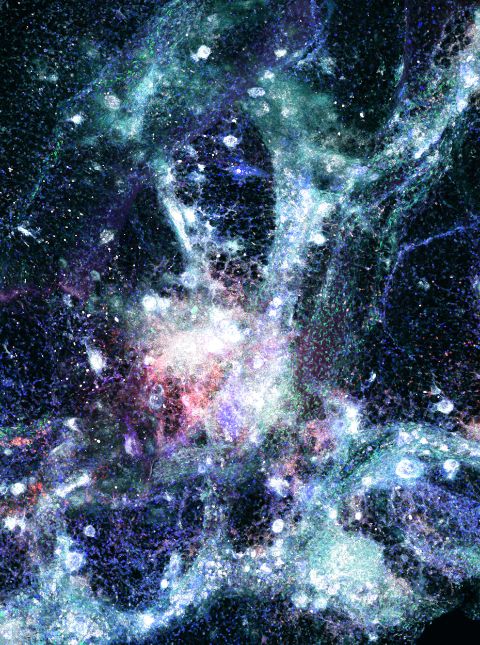The Future of Biology is Quantum: How Nature Might Run on Quantum Physics, and Why This Matters
Keynote by Clarice Aiello with subsequent presentations by the Quantum Biology Hacklab
Keynote, Presentations
Sun., 2.11.2025
16:30
Sylvia Wynter Foyer
In English with simultaneous German translation
Free entry

Hematopoietic Cells. Courtesy of National Institute of Allergy and Infectious Diseases, National Institutes of Health/Flickr, CC BY-NC 2.0
Accumulating experimental evidence suggests that quantum mechanical effects underlie how organisms function. ‘Quantum biology’ encompasses phenomena as varied as: magnetic field detection for animal navigation; metabolic and enzymatic regulation in cells; and optimal energy harvesting in photosynthesis. Unveiling such phenomena at all scales (i.e., from the nanoscale to whole organisms) has remained a challenge, but could eventually lead to the development of various new technologies. These include: biomimetic electromagnetic probes—insect-inspired antennas that mimic biological features observed in nature so as to interact with electromagnetic fields; room-temperature quantum computing architectures that would make quantum computation more efficient and ecologically sustainable; improved photovoltaics to support the expansion of green energy capture; and novel therapeutics that might increase the human body’s healing capacity, e.g. through more efficient targeting of cancer cells.
The session begins with a talk by quantum biologist Clarice Aiello, who reviews some of the evidence in support of these phenomena and considers their proposed underlying biophysical mechanisms as well as their potential implications for human, plant, and environmental biology. Can quantum mechanics be established—or even refuted—to account for physiologically relevant phenomena? And could these phenomena be manipulated to technological and therapeutic advantage?
The field of quantum biology shows promise in working towards answers to these questions. As Aiello argues, successful efforts in the field are contingent on interdisciplinarity, multi-scale approaches, and close theory-experiment collaboration.
The session closes with a presentation of Fertile Void’s very first Quantum Biology Hacklab, which takes place online and at HKW in the weeks preceding the event.